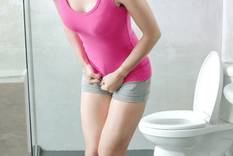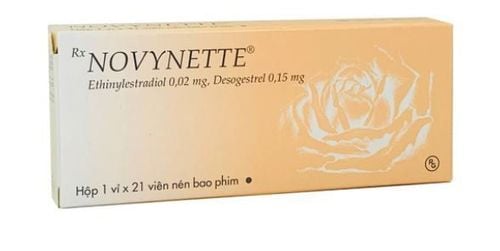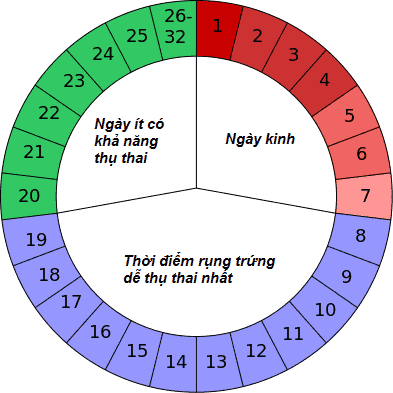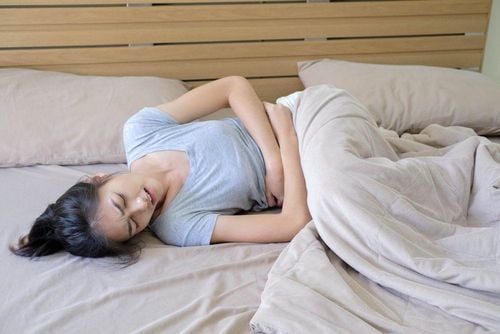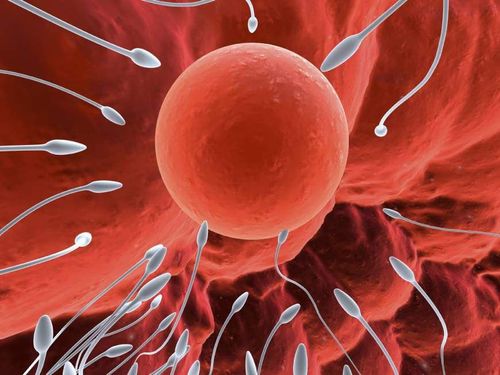The article was corresponded by Lai Thi Nguyet Hang, MD, Specialist level II - Gynecologist - Gynecology Department - Vinmec Ha Long International Hospital.
Menstruation after birth usually occurs early in women who do not breastfeed and do not breastfeed regularly. Menstruation in the first cycles after birth may be heavier and more irregular, and pain may increase due to uterine contractions and stimulation from breastfeeding.
1. The signs of having the first period after giving birth
The period comes sooner or later due to breastfeeding or not and the frequency of it. The signs include:
- If a woman doesn’t nurse the baby, the period usually returns 6 - 8 weeks after giving birth.
- With women fully breastfeeding, there is no menstrual cycle.
- With women partially breastfeeding, the period returns a couple of months after giving birth.
During this return, the nature of menstruation may change compared to before giving birth. For example:
- The period pain is more or less severe than usual.
- Thrombosis appears
- Heavier period
- Increase the stomach pain
- The length of each menstrual cycle is not the same.
The first signs of impending postpartum bleeding after delivery may include bleeding accompanied by more severe abdominal pain due to the increased amount of uterine lining that needs to be shed. In subsequent menstrual periods, the amount of menstrual blood will decrease. In rare cases, complications of the thyroid gland or adenomyosis can cause heavy postpartum bleeding.
In contrast, some issues may reduce the menstrual flow after giving birth, like Endometriosis, Asherman syndrome, and Sheehan syndrome.
2. Why don't breastfeeding women get their period right after giving birth?
Breastfeeding women do not have their period immediately after giving birth because the prolactin level in the body is maintained to stimulate the production of breast milk. This hormone can block the activity of reproductive hormones. As a result, ovulation does not occur, so menstruation does not occur.

3. Does the postpartum menstrual cycle affect breast milk?
The return of your period after giving birth can change your hormone levels. This can affect the amount or frequency of your milk supply by changing the composition or taste of your milk. However, these changes are usually minor and do not affect your ability to breastfeed.
4. Contraception when menstruation returns after giving birth
If you are breastfeeding and your period returns after giving birth, you are no longer protected against pregnancy. There are many safe and effective birth control methods for breastfeeding women, such as the copper intrauterine device (IUD), condoms, and diaphragms, which are safe and do not interfere with breastfeeding. In addition, some hormonal birth control options are also considered safe during breastfeeding. In general, low-dose estrogen-progestin combination pills and progestin-only pills are safe to use while breastfeeding.
5. What causes mild pain during menstruation after giving birth?
Increased menstrual cramps after childbirth are due to a combination of factors:
- Increased uterine contractions
- Stimulation from breastfeeding
- More shedding of the uterine lining due to increased uterine cavity size after childbirth
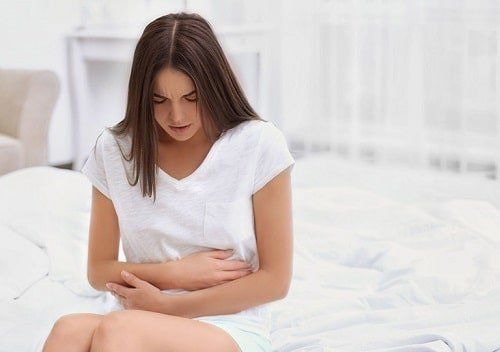
6. Distinguishing between lochia and the first menstrual cycle after giving birth?
In the first few weeks after giving birth, lochia will be abundant and clotted. It will then change to a fluid that ranges in color from milky white to red. This fluid will be secreted continuously for about 6 weeks, which is the time when menstruation can return if you are not breastfeeding.
If the discharge is normal, then stops, then comes back again, it may be that menstruation has returned after giving birth. If you are not sure whether it is fluid or menstrual blood, you can use the following methods to distinguish:
- Bright red discharge that appears from the 6th week onwards is more likely to be menstruation after giving birth.
- If the discharge increases with exercise and decreases with rest, it may be lochia, not menstruation.
- Lochia also has a distinct smell, sometimes called a “sweet” smell because it is mixed with tissue left over from the pregnancy.
7. What symptoms should postpartum women be aware of?
You should see a doctor if you have any of these symptoms because it might be an infection or a menstrual cycle postpartum:
- Changing a lot of pads in an hour
- Bleeding accompanied by sudden and severe pain
- Suddenly have a fever
- Bleeding continuously for more than seven days
- Massive thrombosis
- Stinky liquid
- Severe headache
- Dyspnea
- Discomfort when urinating
Having menstruation after giving birth is a normal sign that a woman is able to get pregnant again after giving birth. At this time, you need to use birth control methods to avoid unwanted pregnancy. When unusual signs appear, you need to go to a medical center for examination and treatment.
Please dial HOTLINE for more information or register for an appointment HERE. Download MyVinmec app to make appointments faster and to manage your bookings easily.
References: healthline.com, parents.com



